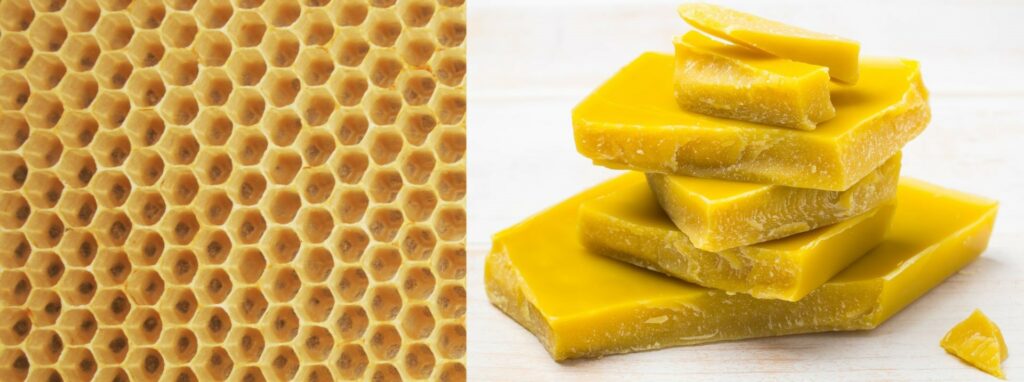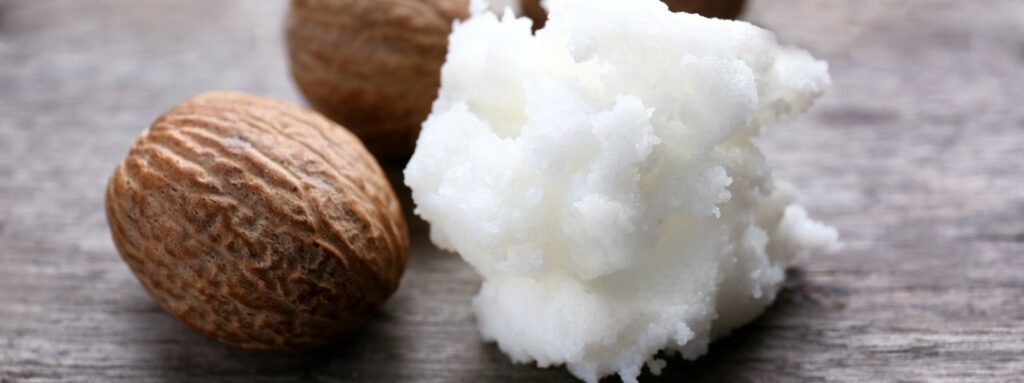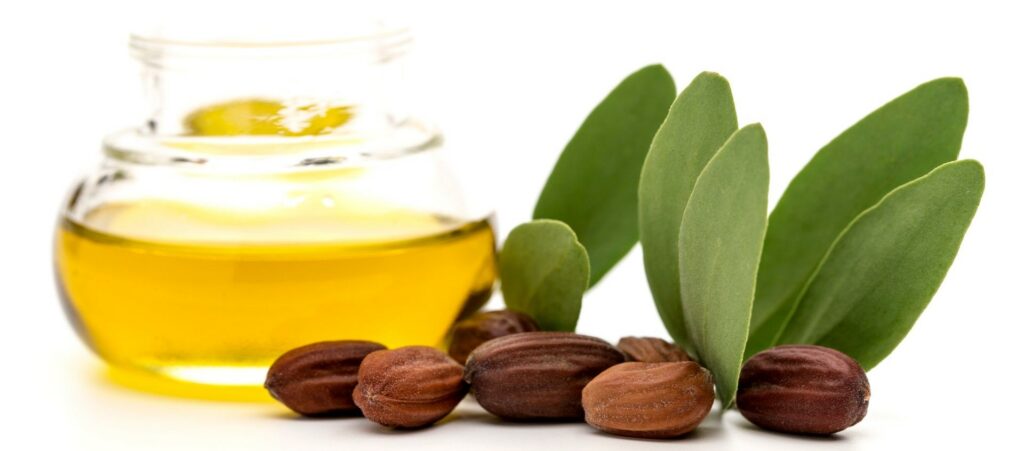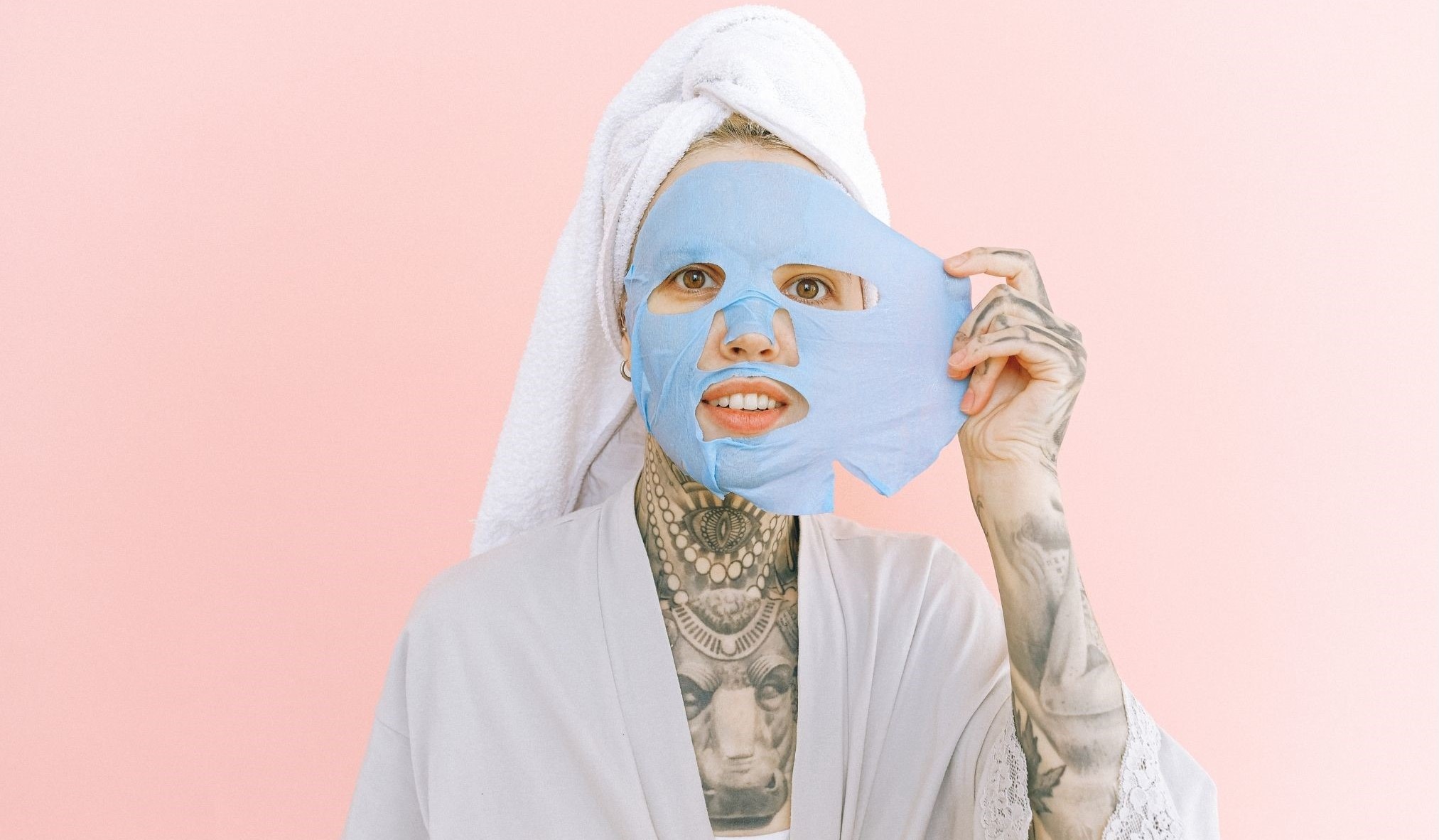Ingredients of Tattoo Creams and Topicals
Tattoos are beautiful pieces of art that allow people to express themselves in a unique way. However, the process of getting a tattoo can be painful and uncomfortable.
This is where tattoo creams and topicals come in. These products have been specifically designed to help reduce pain, swelling, redness, and itching during the tattoo process.
It is important to use tattoo creams and topicals because they help to protect your skin from damage during the tattoo process. The needles used during the process can cause tiny abrasions on your skin which can lead to infection if not properly cared for.
Tattoo creams and topicals provide a protective barrier that helps to prevent these abrasions from becoming infected. Additionally, using tattoo creams and topicals can also help to improve the healing process after you get a tattoo.
Tattoos require proper care in order to heal properly, which includes keeping them clean, dry, and moisturized. Tattoo creams and topicals are formulated with ingredients that help promote healing while also reducing discomfort.
Explanation of Tattoo Creams and Topicals
Tattoo creams and topicals refer to any product that is used before, during or after the tattooing process on the skin itself or on areas around it which may be affected by pain or irritation related with tattoos such as elbows or fingers where there are bones closer under the skin. These products typically come in either cream or gel form and are applied directly onto the skin before, during or after getting a tattoo. They work by numbing the area around where you will be getting inked as well as providing moisture to keep your skin hydrated throughout its healing phase.
While most people think only about numbing agents when it comes to these products there are other ingredients present that serve different functions such as moisturizing, reducing swelling, and preventing infection. Tattoo creams and topicals are a crucial part of the tattooing process and should be used by everyone, from beginners to experienced tattoo enthusiasts.
A Brief Overview of the Ingredients of Tattoo Creams and Topicals
Tattoo creams and topicals contain a variety of ingredients that work together to provide relief during the tattooing process. Some of the main active ingredients include lidocaine which is a numbing agent that reduces pain during the tattoo process. Benzocaine is another numbing agent that helps to reduce pain.
Hydrocortisone is an anti-inflammatory agent that helps to reduce swelling, redness, and itching. Aloe Vera is a natural moisturizer that helps to soothe the skin.
Carrier ingredients found in these products include glycerin which is a humectant that helps to retain moisture in the skin. Beeswax is a natural emollient that helps to soften and protect the skin while shea butter acts as a natural moisturizer.
Jojoba oil which is non-greasy oil can also be found in some products for easy absorption into your skin. Preservatives such as phenoxyethanol are used to prevent bacterial growth in products while potassium sorbate may also be included for this purpose.
Tattoo creams and topicals play an important role in every stage of getting a tattoo from protecting against infection during application through healing aftercare phases post-tattooing with their active ingredients such as numbing agents like Lidocaine or anti-inflammatory agents like Hydrocortisone among others found within them. They should be used by everyone who wants their tattoos done safely without any discomfort or irritation whatsoever.
Active Ingredients
Lidocaine: A Numbing Agent That Reduces Pain During The Tattoo Process
Lidocaine is a local anesthetic that is commonly used during the tattoo process to reduce pain and discomfort. It works by blocking the transmission of nerve signals in the area where it is applied, numbing the skin for a short period of time.
This allows the tattoo artist to work on the skin without causing excessive pain or discomfort to the client. While lidocaine can be effective in reducing pain during a tattoo session, it should be used with caution.
If too much lidocaine is applied to an area of skin, it can cause numbness that lasts longer than intended and may lead to complications such as skin irritation or even nerve damage. It’s important that lidocaine be used only in appropriate amounts as directed by a qualified professional.
Benzocaine: Another Numbing Agent That Helps To Reduce Pain
Benzocaine is another local anesthetic commonly found in tattoo creams and topicals. Like lidocaine, benzocaine works by blocking nerve signals in the skin, numbing the area being worked on during a tattoo session. While benzocaine can be effective at reducing pain during a tattoo session, it also carries some risks if used improperly.
Overuse of benzocaine can cause unwanted side effects such as allergic reactions or skin irritation. For this reason, it’s important to use benzocaine carefully and only under proper medical supervision.
Hydrocortisone: An Anti-Inflammatory Agent That Helps To Reduce Swelling, Redness And Itching
Hydrocortisone is a corticosteroid hormone that has anti-inflammatory properties and is often included in tattoo creams and topicals as its active ingredient. Hydrocortisone works by blocking the release of certain substances in the body that cause inflammation and irritation, reducing redness, swelling, itching and soreness on the skin. While hydrocortisone can be effective in reducing inflammation during the healing process after a tattoo session, it should be used with care.

Overuse of hydrocortisone can lead to unwanted side effects such as thinning of the skin and an increased risk of infection. It’s important to use hydrocortisone only as directed by a healthcare professional.
Aloe Vera: A Natural Moisturizer That Helps To Soothe The Skin
Aloe vera is a natural plant-based ingredient commonly included in tattoo creams and topicals for its moisturizing properties. Aloe vera works by hydrating and soothing the skin, reducing dryness and promoting faster healing after a tattoo session.
It’s also known for its cooling effect which helps to soothe any discomfort associated with the tattooing process. Aloe vera is generally considered safe for use on most people unless they have an allergy to it.
However, it should still be used with care as overuse or misuse of aloe vera can lead to unwanted side effects or allergic reactions. As with all ingredients in tattoo creams and topicals, it’s important to read labels carefully to ensure you’re using them correctly and safely.
Carrier Ingredients
Glycerin: Hydrating and Moisturizing Ingredient
Glycerin is a clear, colorless, and odorless liquid that has a sweet taste. It is a humectant, which means it attracts moisture from the environment to the skin. When applied to the skin, glycerin forms a protective layer that helps to retain moisture and prevent dehydration.
Glycerin is also an emollient, which means it softens and soothes the skin. In tattoo creams and topicals, glycerin is used as a hydrating and moisturizing ingredient.
During the tattoo process, the skin can become dry as ink is injected into it. The use of glycerin in tattoo creams helps to keep the skin hydrated during and after the tattooing process.
Beeswax: A Natural Emollient
Beeswax is a natural wax produced by honey bees. It has emollient properties that help to soften and protect the skin while also acting as a humectant by attracting moisture to the skin. Beeswax has anti-inflammatory properties that can reduce swelling in the area of application.

In tattoo creams and topicals, beeswax acts as an emollient that softens and protects the skin during and after tattooing sessions. It also helps to prevent dehydration of the skin by forming a protective barrier on its surface.
Shea Butter: A Rich Moisturizer
Shea butter is extracted from nuts of African shea trees; it contains high levels of vitamin A, E & F – which help soothe dry or irritated skin while protecting it from environmental stressors such as pollution or UV rays – reducing wrinkles on long-term use; this oily substance penetrates deep into your pores providing immediate relief from itchiness caused by eczema or psoriasis. Shea butter is a natural moisturizer that is rich in vitamins A, E, and F. It has been used for centuries to protect and heal the skin.

Shea butter has anti-inflammatory properties that can reduce the redness and swelling of the skin. It also contains oleic and stearic acid, which helps to lock in moisture on the skin’s surface.
In tattoo creams and topicals, Shea butter acts as a natural moisturizer that helps to soothe, protect and heal the skin during and after tattooing sessions. It also helps to reduce inflammation caused by the tattoo process.
Jojoba Oil: Non-Greasy Oil
Jojoba oil is extracted from seeds of jojoba plant found mostly in North America. This oil contains vitamin E – which is an antioxidant that helps fight off free radicals – reducing wrinkles and dryness on long-term use; it’s rich in essential fatty acids (omega-6 & 9) providing excellent hydration boost for your dry or sensitive skin.

Jojoba oil is a non-greasy oil that is easily absorbed by the skin. It has anti-inflammatory properties that can reduce redness and swelling of the skin.
Jojoba oil contains ceramides, which are naturally occurring lipids found in our skin that help to lock-in moisture on its surface. In tattoo creams and topicals, Jojoba oil acts as an excellent hydrating ingredient that provides deep nourishment while also protecting against environmental stressors such as pollution or UV rays – keeping your tattoos looking brighter longer!
Preservatives
Tattoo creams and topicals contain a variety of ingredients that serve different purposes. In addition to active and carrier ingredients, preservatives are often included to prevent bacterial growth in the product.
This is especially important for tattoo creams, as they are applied directly to open wounds and can introduce bacteria into the skin if not properly preserved. Phenoxyethanol is one of the most commonly used preservatives in tattoo creams and topicals.
It is a clear, oily liquid that is effective against both gram-negative and gram-positive bacteria. Phenoxyethanol works by disrupting the cell membranes of bacteria, which prevents them from growing and multiplying.
It is also effective against fungi and viruses, making it a versatile preservative for tattoo products. While phenoxyethanol has been deemed safe for use in cosmetic products by regulatory agencies around the world, some people may experience allergic reactions to it.
Symptoms can include redness, itching, and swelling of the skin. However, these reactions are rare and typically only occur at high concentrations of phenoxyethanol in products.
Potassium sorbate is another commonly used preservative in tattoo creams and topicals. It is a salt that is derived from sorbic acid, a compound found naturally in some fruits and berries.
Potassium sorbate works by inhibiting the growth of yeast and mold in products. This helps extend the shelf life of tattoo creams and topicals without compromising their effectiveness.
Like phenoxyethanol, potassium sorbate has been deemed safe for use in cosmetic products by regulatory agencies around the world. It is generally considered non-irritating to the skin at low concentrations but may cause mild irritation at higher levels.
Preservatives like phenoxyethanol and potassium sorbate play an important role in ensuring that tattoo creams and topicals remain safe for use over time. Without them, these products would be susceptible to bacterial growth, which could lead to infections and other complications.
While some people may experience allergic reactions to these preservatives, they are generally considered safe for use in cosmetic products at low concentrations. Tattoo artists and enthusiasts should always check the ingredient labels of tattoo creams and topicals before using them to ensure that they are properly preserved.
Conclusion
Tattoo creams and topicals are essential for taking proper care of your skin before, during, and after getting a tattoo. These products help to reduce pain, swelling, redness, and itching and can even speed up the healing process. The ingredients in these products play a crucial role in their effectiveness.
Investing in High-Quality Tattoo Creams is Worth It
It may be tempting to buy cheaper tattoo creams or opt for homemade remedies. However, investing in high-quality tattoo creams with clinically proven ingredients is worth it.
These products are formulated to meet the unique needs of tattooed skin and provide optimal results. In contrast, using untested or unverified products can lead to infections or slow down the healing process.
In addition to using high-quality tattoo creams, it’s also important to follow proper aftercare instructions provided by your tattoo artist. This includes keeping your tattoo clean and moisturized while avoiding exposing it to excessive sunlight or water.
Natural Ingredients Are A Good Option
If you’re concerned about using synthetic ingredients on your skin, there are plenty of natural alternatives available as well. For example, aloe vera is an excellent moisturizer that has anti-inflammatory properties that help reduce redness and swelling.
Shea butter is another natural ingredient that’s rich in vitamins A, E, and F which nourish the skin. Before choosing any product with natural ingredients make sure you choose from trusted brands which do not include counterfeit or substandard ingredients.
The Future of Tattoo Skincare Looks Bright
The demand for innovative tattoo skincare solutions continues to rise as more people get tattoos every year. As such, we can expect new research on effective ingredients as well as new formulations that cater specifically to different skin types in future. With the right combination of ingredients and proper aftercare, tattoos can remain vibrant, beautiful, and healthy for many years to come.
Ultimately, tattoo creams and topicals are an essential part of the tattoo process. Whether you’re getting your first or your fiftieth tattoo, investing in high-quality products that contain effective ingredients will help ensure that your tattoo looks its best while also keeping your skin healthy.
References
Lidocaine – StatPearls – NCBI Bookshelf (nih.gov)
https://www.sciencedirect.com/topics/agricultural-and-biological-sciences/jojoba-oil
Shea Butter – an overview | ScienceDirect Topics
Anti-inflammatory activity of D-002: an active product isolated from beeswax – ScienceDirect
Glycerol and the skin: holistic approach to its origin and functions – PubMed (nih.gov)
Benzocaine – StatPearls – NCBI Bookshelf (nih.gov)
Medical Disclaimer:
The information provided on this website regarding tattoo removal techniques is for general informational purposes only. It is not intended to be a substitute for professional medical advice, diagnosis, or treatment. Always seek the advice of a qualified healthcare professional regarding any medical condition or concerns, including tattoo removal.
The content presented on this website should not be interpreted as endorsing or promoting any specific tattoo removal technique, product, or service. The effectiveness, safety, and suitability of tattoo removal methods can vary depending on individual circumstances and factors. Therefore, it is crucial to consult with a medical professional or qualified specialist before making any decisions or embarking on any tattoo removal procedure.
The website does not guarantee the accuracy, completeness, or reliability of the information provided. Reliance on any information from this website is solely at your own risk. The website and its owners, authors, and contributors shall not be held liable for any damages or consequences arising from the use of the information provided.
It is important to note that medical practices and standards may change over time, and the information provided on this website may not always reflect the most up-to-date research or guidelines. Therefore, it is recommended to consult with healthcare professionals or reputable sources for the latest information and advice on tattoo removal techniques.
If you experience any adverse reactions, complications, or concerns during or after a tattoo removal procedure, promptly seek medical attention. Only a qualified healthcare professional can assess your specific situation and provide appropriate advice and treatment.
By using this website, you acknowledge and agree to the above disclaimer, and you understand that the website and its owners, authors, and contributors cannot be held responsible for any decisions or actions taken based on the information provided.

